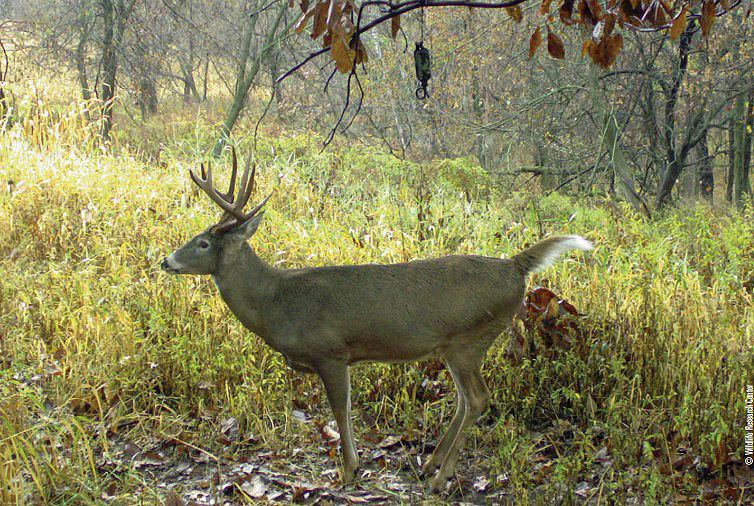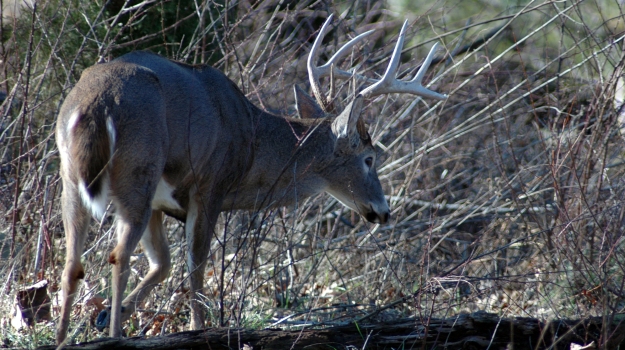Todd Amenrud | Originally published in GameKeepers: Farming for Wildlife Magazine. To subscribe, click here.
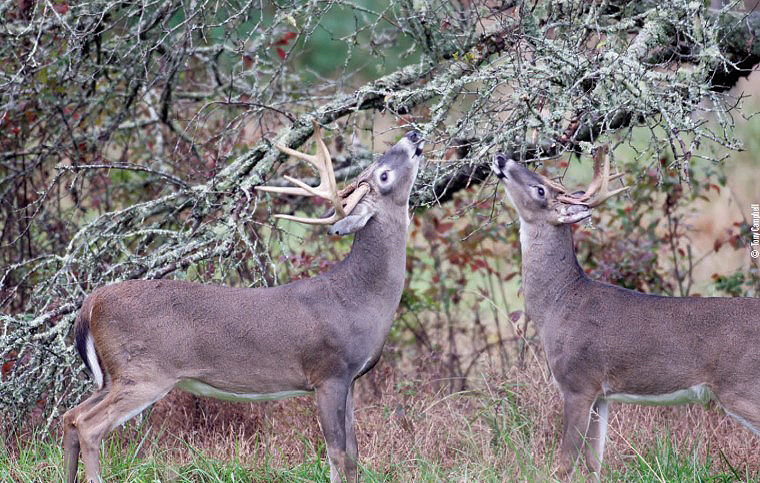
Using a buck’s scrapes as the focal points to get close enough for a bowshot is a proven tactic from late September through December, or later throughout the Deep South. However, without the use of a trail camera or a Magnum Scrape Dripper it might be difficult to determine when a scrape is being hit. A good number of scrapes are made and seldom freshened again, and a good majority are made and/or visited after dark. Knowing which scrape areas to target and when to strike are keys to hunting scrapes effectively.
Mock scrapes can often assist in deceiving a mature buck into making that one, fatal mistake. Using mock scrapes is a great way to entice bucks into an area. My best luck comes from making a series of mock scrapes and using Magnum Scrape Drippers over them—my own fake "scrape-line" so to say. The feeling of anticipation is like reliving my old trapping days. I love the expectancy of making a mock scrape setup and then “attacking” when the time is right.
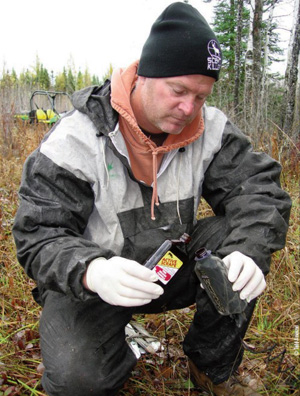
designed to drip scent during daytime hours,
conditioning bucks into showing up during
daylight and spending more time in the area.
The Magnum Drippers are heat activated so they drip during daylight hours. This conditions bucks into showing up during shooting light and hanging around in the area longer. This method is tried and true for targeting bucks pre-rut and again postrut. Some feel they need a buck (or bucks) to interact directly with one of their mock scrapes, but for me, a successful setup is one that simply brings my target buck into the site during hunting hours for a shot opportunity.
Targeting the right area is important. You can't just seek out any overhanging branch and expect to create a successful mock scrape. For a buck, a scrape doesn’t actually begin on the ground—it starts with the “licking branch” hanging over the scrape area—usually about four-and-a-half to six feet high. So, obviously the site must have at least one branch the correct height. I suggest targeting areas already being used by your target buck. Other good spots tend to be clusters of new scrapes; large scrapes (some as large as the hood on your pick-up and often visited by many bucks), funnels connecting one woodlot to another, around the edge of secluded food plots or areas you know to have been good scrape areas year after year.
Field edge or perimeter scrapes are usually not good starting points; concentrate on ones closer to bedding areas. You want to seek out an area that your target buck is claiming as his, then push in and make it look and smell like there's a rival buck moving in on his turf. I want to “tick him off” and “push his buttons.”
Once you find an area, search out the same type of tree with the same height overhanging branch (licking branch) that the buck originally approved used. As said, this interaction branch is usually about five to six feet off of the ground. Try to duplicate the variables that the specific buck you're after preferred—the height of the branch, the same type of tree, etc. You can actually use the buck’s existing scrapes—in the whitetails' world the same scrape may be utilized by many different bucks. However, more often than not, I’ll make my own scrape, trying to copy the specifics found with the buck’s already existing scrape(s).
I’ve had two great lessons taught to me by other hunters. Paul Marion, with Wildlife Research Center, taught me to use hemp rope in place of the licking branch. Two good things come from this. First, since the rope can be adjusted, you can have a “licking branch”, or in this case a “licking rope,” almost anywhere. Bucks just need an object on which to deposit their forehead and preorbital scent. Thus far, other types of rope have not produced;it needs to be hemp. I supposed because it’s natural fiber or something. The second point is that the rope can be used over, again and again, as long as it is taken care of properly.

be used to our advantage. One tactic is to
take over their actual existing scrape(s) to
make it appear that a rival buck is moving in
on top of them. Another is to remove their
licking branch and move it to a location that
better suits you.
Another great lesson came from my brother-in-law. He had two shooter bucks showing up to a five acre Deer Radish/Maximum food plot almost every afternoon. They would enter the plot and begin making scrapes under some of the dozens of promising licking branches surrounding the plot while the does feasted on the brassicas. He made two mock scrapes and had one dripper going within range of his treestand, but there were literally dozens of scrapes around the plot, and while his scrapes were getting hit, it never happened while he was hunting. After several times witnessing this he took a chainsaw and pole-pruner and sawed off almost all of the licking branches around the plot accept for a few within range of his stand—he killed one of the two whoppers the next afternoon as it came to visit his dripper enhanced scrape. Out of sight, out of mind, I guess. The buck sniffed around where the scrapes had been, but apparently didn’t have the urge to freshen the ones without the trigger of the licking branch.
A licking branch from a buck’s real scrape may also be transferred to a mock scrape. If the area is lacking branches at that perfect licking branch height this tactic can be especially productive. The branch can be fastened to your tree of choice with a tie-wrap (cable tie or “zip-strip”), nailed or wedged between existing branches (or yes, even duct-taped).
Making a Mock Scrape
The actual mock scrape is best created with a sturdy stick found in the area. In absence of a stick, a hatchet, machete or rake can make very fast work of this job. Just as with any gear used for this job, it must be as free of foreign odor as possible—don’t select a rake that’s been hanging near your vehicle’s exhaust in your garage and expect to fool an animal with a sense of smell thousands of times superior to yours. Try to make the scrape on flat ground (if possible) and make sure it is free from all debris. Sure, leaves may fall in it, but to begin you want the mock scrape to be free of grass, roots, sticks…all debris. Again, be careful not to transfer human scent to the spot. Clean rubber-bottomed boots and gloves should be worn to reduce scent-transfer.
After collecting data from mock scrape locations set up both, at mock scrapes and natural existing scrapes without drippers, there’s no question that you’re odds are significantly better at scrapes, or scrape areas that have drippers. This wasn’t conducted as a scientific study, but I would say your odds are at least double when using dripper(s).
I prefer a set-up that initially varies the scent used in each dripper. With more than one "mock" you’re increasing your chances that something's going to be right with at least one of them that will draw a response. I’ve used as many as six drippers and created as many as a dozen mock scrapes in an area about the size of an acre. My two favorite scents are Active Scrape, and Trail's End #307 used in the dripper. However, any liquid scent can be used as long as it will flow through the dripper.
The idea is to let your drippers freshen the site for you by dispersing scent during daylight hours, conditioning bucks to show up earlier in the day and spend more time at the site. If you check the spot before it’s hunted and see that a preference is shown towards one scent over another, change the rest of the drippers to that scent. Use your best judgment, if the site is “smoking hot” with fresh sign, back out and hunt the spot as soon as the conditions permit it. If you want things to “build” for a while, then refresh the drippers with new scent.
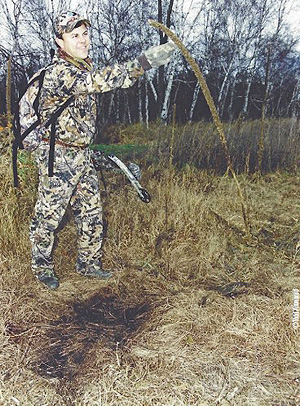
underneath an interaction branch (licking
branch) about 5 ½ feet off of the ground. In
this case, apparently the buck selected a
“licking weed” instead.
Consistent with just about every successful mock scrape set-up that I have had are the “mock rubs” I also suggest creating. With a pruner or wood-rasp, I rake-up a number of two to six-inch saplings/trees. A real intruder buck would also mark the territory in this way. If the bucks in the area aren’t rub-crazy, don’t go overboard. On the rubs, and in various other places around the set-up, I use a scent called Mega Tarsal Plus. This scent could be classified as a “territorial intrusion scent.” The illusion you should strive for is one that a foreign buck has moved in on his scrape-claimed territory and is taking it over. Select Buck Urine is sometimes also placed out at several key places in the area.
Timing is critical for mock scrapes to work consistently. In the Midwest I seem to have my best luck from the second week of October through the first week of November, and then again after Thanksgiving and into the first part of December. When the bucks are actively chasing and breeding, mock scrapes are probably not your best tactic. You want the bucks to be actively protecting territory.
Throughout this process you must be cautious of scent transfer. Rubber gloves should be worn to avoid leaving smells on the overhanging branch, the dripper or anything else you touch. Elbow length trapper’s gloves work perfectly for this. Scent Killer Gold should be sprayed on your boots and clothing to help reduce odors before you access the site for set-up and again when you hunt the spot.

sturdy stick found in the area, or a number of
different tools like a rake, hatchet or
machete as long as it is relatively scent-free.
Try to make a three foot oval free of all
debris.
Another little secret is to hang your drippers on a higher branch above the interaction branch (licking branch). This keeps them from getting a good whiff of any foreign odors that may have permeated the dripper's cloth cover. I like to pull down a higher branch with my pole-pruner and hang the dripper on it, just make sure the scent will drip into the scrape. It’s okay if some of the scent also hits the licking branch too. I haven’t seen this influence results at all.
Don't expect your exact mock scrape(s) to necessarily get hit. Sometimes they may interact directly with your creation, sometimes they don’t. However, my goals are to simply draw them to the area during legal shooting light and hold them there for a longer period of time; I don’t care if they touch my mock scrape as long as I get the shot.
One of my favorite tactics is to drag a scent trail of Special Golden Estrus into the mock scrape site when I hunt. The idea is; with the mock scrapes I’m representing a rival buck trying to pilfer my target buck’s territory. Now you add a hot doe in the vicinity… your target buck must intervene. This has worked on several mature bucks for me. Timing is crucial; it must be while the bucks are still actively defending scrape-marked territory, but before the real does begin to show signs of actually coming into heat.
A hunter should use all other aids and information in conjunction with scrapes. Know where the does are bedding, what the preferred food sources are at that time, where your target buck is bedding, and where he may have other hot scrape areas. Take in the "big picture" of the whole area and use all of the scrapes in relationship with other factors before making your set-up.
